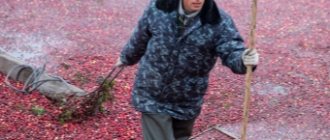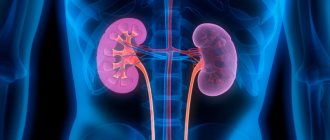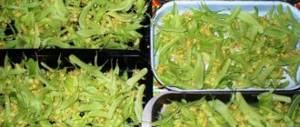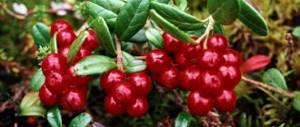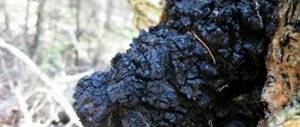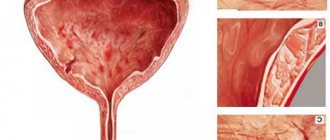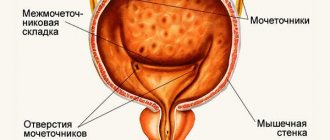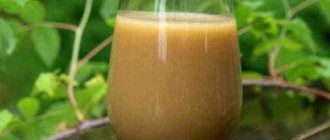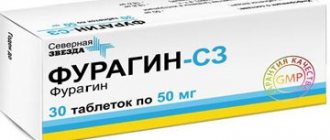A beautiful name for a beautiful plant. The grass is half-fallen, also known as woolly erva, also known as Aerva lanata, loved by the people for a number of beneficial properties. She is called a surgeon without a scalpel. Rumor ascribes to it miraculous properties in the treatment of urolithiasis. It is believed that it is able to remove stones from the body and prevent their occurrence.
The medicinal properties of the medicinal plant have been officially confirmed. The herb half-fallen can be found in official directories of medicinal plants. A collection of woolly erva can be bought in pharmacies.
The grass is half fallen: beneficial properties
Erva woolly is an effective natural diuretic for diseases of the urinary tract, kidneys, prostate, and bladder. The birthplace of the two-year-old herbaceous plant is the island of Ceylon.
The healing properties of woolly erva are known not only to folk healers and herbalists: official medicine approves the use of plant materials in the treatment of many pathologies. The herb was included in the list of medicinal plants in 1992, the instructions for use were approved by order of the Ministry of Health of the Russian Federation.
Monitoring the biochemical parameters of urine before and after taking a decoction of a medicinal plant confirms the effectiveness of the herbal remedy.
Medicinal properties of the herb pol – pala:
- “mild” diuretic;
- antiseptic;
- mild anti-inflammatory;
- removal of salts while maintaining the amount of potassium;
- dissolution of small kidney stones;
- decreased blood clotting;
- anti-putrefactive effect, healing of ulcers;
- decrease in blood urea levels;
- correction of blood sugar levels to optimal values;
- strengthening the vascular wall;
- antiseptic effect;
- elimination of smooth muscle spasms;
- positive effect on metabolic processes, hormonal balance;
- reducing the concentration of bad cholesterol;
- elimination of edema without sudden removal of fluid;
- reduction of pain in joints due to salt deposition (gout, polyarthritis);
- disappearance of acne due to malfunctions of the endocrine system;
- normalization of blood pressure during the treatment of renal pathologies and diabetic nephropathy.
The healing herb has a positive effect not only on the organs of the urinary system, but also on other parts of the body. Doctors recommend a decoction for pathologies of the digestive tract and endocrine diseases.
Learn how to use rosehip root to treat kidney stones.
Read about the rules of nutrition and diet during kidney hemodialysis at this address.
Half-frozen grass helps with the following disorders:
- stomach ulcer;
- unstable menstrual cycle;
- pancreatitis;
- hemorrhoids (enemas with a healing decoction);
- acne;
- ulcers on the body;
- furunculosis;
- gout – accumulation of urate in the joints;
- disruptions in metabolic processes;
- intestinal polyps;
- gallbladder pathology;
- inflammatory processes in the prostate gland;
- spondylosis, arthritis;
- pronounced swelling with elevated blood pressure.
Compound:
- amino acids;
- alkaloids;
- potassium;
- flavonoids;
- inorganic salts;
- calcium;
- phenolic acids;
- pectins;
- limit carbohydrates;
- chromium.
Dry plant raw materials are packaged in cardboard packs, weight – 30, 35, 50, 100 g.
How to dry?
First, you should remove debris, sort through and discard pieces of the plant affected by pests and diseases. It is best to dry the floor in the shade in the fresh air. You can also place the plant in a well-ventilated, warm and dry room, for example, on a veranda. In addition, half-palm dries well in household electric dryers.
Reference! If the grass is collected on time and properly dried, it retains its beneficial properties for 3 years.
Indications for use
Pal-pal infusion is prescribed for diseases of the kidneys and urinary tract:
- pyelonephritis;
- urethritis;
- initial stage of urolithiasis;
- period after lithotripsy (crushing stones);
- infectious pathologies of the prostate gland, bladder;
- disruptions in salt metabolism: polyarthritis, gout, spondylosis;
- diabetic nephropathy;
- edema syndrome, increased blood pressure in renal pathologies.
Analogs
When replacing a prescribed drug with an analogue, consultation with a doctor is necessary. The most popular and more suitable in terms of scheme and direction of action are:
"Birch buds"
Krasnogorlekarstva or LLC Zdorovye, Russia Price from 120 rub. up to 150 rub.
Birch bud infusion has a diuretic and anti-inflammatory effect. Sold in filter bags or in bulk. Can be used both internally and externally (in the form of compresses, lotions).
pros
- Can be used for cosmetic purposes and to treat the respiratory system
- Removes excess cholesterol from the body
Minuses
- Contraindicated for use during pregnancy and children under 12 years of age
- An allergic reaction may occur.
"Juniper fruits"
Krasnogorlekarstva or LLC Zdorovye, Russia Price from 45 rub. up to 70 rub.
This product has an antimicrobial, anti-inflammatory and diuretic agent. Juniper fruits contain essential oil, sugars, flavonoids, organic acids, resins and other biologically active substances.
pros
- Can also be used to treat joints and bones
- Improves digestion and has anthelmintic properties
Minuses
- Restrictions on use during pregnancy and breastfeeding
- If the consumption limit is exceeded, increased blood pressure, tachycardia, and impaired renal function are possible.
- Not used for diseases: ulcers, gastritis, colitis.
"Horsetail grass"
Krasnogorlekarstva or LLC Zdorovye, Russia Price from 30 rub. up to 60 rub.
Horsetail is rich in many useful elements (silicic acid salts, vitamin C, potassium salts, flavonoids and others). The drug is used in the form of an infusion as a diuretic for swelling and inflammatory diseases of the bladder.
pros
- Therapeutic effects appear immediately after the start of use
- Can be used as a hemostatic agent
Minuses
- Cannot be used for nephritis and nephrosis
- If the treatment is associated with inflammation of the genital area, then the use of Horsetail can be dangerous.
Contraindications
Erva woolly is not suitable for patients with the following conditions and diseases:
- large stones in the urinary tract and kidneys;
- osteoporosis;
- lactation period;
- patient age under 12 years;
- pregnancy;
- calcium metabolism disorder;
- hypersensitivity to substances in the plant;
- pathologies accompanied by increased calcium levels.
Important! You should not violate the doctor’s recommendations prohibiting the use of diuretics when large stones are detected. If the size of calcifications, urates, and oxalates exceeds the diameter of the ureter, then when solid formations move, blockage of the ducts and the development of acute pain syndrome are possible.
What diseases does it help with?
The herb, the indications for use of which must be discussed with the attending physician, is many times more powerful than other herbal preparations. Erva woolly is very often used to treat:
- Colitis.
- Gastritis.
- Acne.
- Pancreatitis.
- Stomach ulcers.
- Menstrual irregularities.
- Liver cirrhosis.
- Migraine.
- Arthritis.
- Osteochondrosis.
- Polyps in the intestines.
- ORZ.
- Fibroids.
- Fibroids.
- Fibroids.
- Constipation.
- Spinal diseases.
- Hemorrhoids.
- Bronchitis.
- Tracheitis.
- Atherosclerosis.
- Glomerulonephritis.
- Gynecological ailments.
- Urethritis.
- Pielita.
- Prostatitis.
- Cystitis.
- Urolithiasis.
- Pyelonephritis.
- Spondylosis.
- Gout.
- Polyarthritis.
The herb is often used for weight loss. After all, preparations based on it allow you to cleanse the body of many harmful substances.
Advantages
An infusion of Erva woolly is recommended by many doctors. When used correctly and taking into account indications and contraindications, the medicinal plant exhibits active properties and allows one to reduce the frequency of taking synthetic drugs.
Positive points:
- half-palm acts “gently”, during the removal of excess fluid there is no sudden loss of potassium;
- supporting properties to maintain optimal blood pressure levels;
- possibility of external and internal use;
- noticeable therapeutic effect;
- strengthens the immune system;
- maintaining water and electrolyte balance;
- active wound healing effect;
- suitable for use in many diseases;
- normalizes metabolic processes, allowed for diabetics;
- reduction of swelling occurs without dehydration of the body;
- ease of preparation;
- low cost of packaging with plant raw materials.
To increase the effectiveness of the herbal remedy, doctors recommend following a diet depending on the type of disease. For different types of stones in the kidneys and urinary tract, the consumption of certain foods is limited. The diet for oxalates differs significantly from the menu for urates.
How and why to grow a plant yourself?
This plant comes from the island of Ceylon (Sri Lanka). But it has excellent abilities to get used to the climate, although it remains a lover of moisture and heat. Erva woolly lives less in other climates, but retains its medicinal properties. It is not customary to grow medicinal plants on a windowsill. Separated from daylight with its heat and cold, from the seasons, sometimes they do not take root in the comfort of a living space. The collection purchased at the pharmacy is the result of targeted cultivation. The purchase may be the fruit of friendly international relationships (import-export of herbs). Or is it the result of cultivation in specially created artificial conditions (industrial).
The environmental cleanliness of places where medicinal plants grow, processing technology, and care products are often questioned. How high-quality collection does a person acquire? How often can you find a product shortage? The desire to grow grass yourself is a normal desire to control everything. Each species retains most of its beneficial properties regardless of soil and climate. Through his efforts, a person can change the concentration of substances. If you want to try growing a medicinal plant yourself, you must comply with some conditions:
- make a list of species that you would like to do;
- choose a place (it could be a window sill or a summer house);
- choose soil, lighting, watering, care;
- depending on the species, find a plant with roots, seeds, sprouts and plant;
- draw your own conclusion if a wild plant could not be made cultivated and domesticated.
Half of the fallen grass is germinating from seeds. They can be found inside the purchased pharmacy collection. It takes root well and grows in the conditions of an ordinary summer cottage and does not lose its medicinal properties.
The long-standing tradition of herbalists—people who collect herbs—keeps the collections, but does not grow the plants themselves. They pass on their knowledge by inheritance or the teacher can find a student for himself. When a herbalist prepares a collection, he selects the time of day at which to collect a particular species.
It is logical to assume that at certain times the medicinal properties of plants are different. But there are no studies confirming or refuting the theory that in the morning, after lunch, at sunset or at midnight, the medicinal plant has a special concentration of some substances.
An herbalist is a unique person who knows what millions of plants look like. He can recognize any type and remember recipes.
Where large numbers of people and domesticated animals live, poisonous grass species are destroyed. Herbalists can always determine the harm and benefit of plants and use them for their intended purpose.
It so happened historically that people who were keen on collecting medicinal plants were sometimes subjected to persecution and persecution by government authorities. This was due to the fact that they could break the letter of the law for the sake of the patient. This is how the first operations and abortions were once performed. Herbalists had knowledge of the narcotic properties of plants. Witch doctors were called madmen or sorcerers. The field of medicine has been a priority for clergy and government authorities for many centuries. Although she was not given rest. The methods of ancient people to treat a tooth and decorate it with metal were considered wild, senseless, and too gentle. After all, epidemics once raged, claiming lives in huge numbers.
A real subject did not have time to treat every tooth. People couldn't afford it, and the government didn't allow them to do it. Life expectancy was much lower back then. Herbalists preferred to remain somewhat superstitious, working exclusively with herbs, without taking additional means in their hands in the form of alcohol, gauze, or a scalpel. Having their own traditions, they always loved philosophy. Just yesterday the widespread religiosity of human civilization could have prohibited saving lives. Herbalists were forbidden to express their own views on the structure of the world. Finding no protection, persecuted and persecuted by official science, religion and government authorities, they performed miracles.
Today, an herbalist is a rarity. The traditions of dynasties in the age of world wars have lost their meaning due to the popular tendency to emigrate. Each person can become interested in this again and pass on knowledge to descendants. Herbalists refuse to reveal their secrets to outsiders. Possible reasons for this could be: you really need talent to collect them, you can accidentally pick up a poisonous plant, few people are ready to get to know them on their own.
Instructions for use
How to brew herb? Doctors advise observing the proportions and preparing the herbal remedy according to the recipe. Erva woolly contains a rich set of active components; violation of the concentration of the composition can provoke side effects.
Recommendations:
- take the infusion orally a third of an hour before meals;
- for ulcerative skin lesions, acne, and the appearance of boils, apply the healing agent to the affected areas in the form of compresses;
- for hemorrhoids, a therapeutic enema is given with the infusion of Erva Woolly;
- preparing the infusion: place 2 tbsp in an enamel or glass container. l. herbs, add hot water - 200 ml, simmer for 45 minutes in a water bath;
- Filter the finished composition, pour in boiled water so that the volume reaches 200 ml again;
- Store the prepared product for two days at a temperature of +8 to +15 degrees;
- rules for use for children: from 12 to 14 years old, drink a tablespoon two or three times a day, from 14 years old, increase the norm to two tablespoons;
- dosage for adults – 50 or 100 ml, 2 or 3 times a day;
- For the effectiveness of therapy, it is forbidden to eat spicy and salty foods;
- The average duration of treatment is from 10 to 30 days. After a few months, doctors recommend repeating the course if indicated.
Note! The infusion based on natural raw materials contains a rich set of microelements and active components. Long-term use has a negative effect on tooth enamel. For this reason, doctors recommend taking the product through a straw and rinsing your mouth with clean water after the procedure.
Harvesting and using grass
The herb sold at the pharmacy consists of a mixture of stems, roots and seeds mixed in equal quantities. It is convenient to use for preparing decoctions and infusions. When a plant is grown at home, it must be properly prepared so that it retains its medicinal properties:
- At the beginning of October, the seeds are collected, the plant is uprooted, cleared of soil, finely chopped and dried along with the seeds in a warm room with good ventilation.
- Dried herbs are stored in bags made of natural fabric, which are hung in a dry, cool room. If everything is done correctly, the plant does not lose its medicinal properties for about 3 years.
To strengthen the immune system and for colds, it is useful to take herbal tea, which helps clear the respiratory tract of mucus and speeds up recovery.
To prepare you need 2 tsp. dry herbs pour 200 mg of boiling water. Cover with a lid and leave for 10 minutes. Then strain, cool to 40 °C, add honey if desired and drink as tea 2 times a day.
Side effects
The infusion of Erva woolly most often does not cause negative manifestations. With increased sensitization of the body, allergic reactions to the skin, swelling, and itching are possible. In some cases, nausea appears.
It is important to drink the infusion through a straw: a long course of therapy provokes thinning of tooth enamel. After discontinuation of the herbal remedy, the unpleasant symptoms disappear.
You should not combine herbal raw materials and synthetic diuretics that increase potassium excretion.
Pol-pal preparations during pregnancy
Many women during pregnancy encounter certain ailments that cannot be treated with synthetic drugs. Therefore, the question arises whether it is possible to take products based on Erva woolly when you are expecting a child. This should be discussed with your doctor. Only a specialist can take into account the feasibility of such therapy. Indeed, in this case, the state of health of the pregnant woman, the potential threat to the fetus, as well as the degree of the disease and the need for its treatment must be assessed.
Cost and storage rules
To preserve the properties, you should not keep the box of raw materials in a damp room. It is important to ensure that the pack is closed to avoid exposure to sunlight. No special conditions are required: half the grass is stored at room temperature. The shelf life of plant raw materials is 36 months.
Erva woolly grass is sold in all regions. Herbal tea is offered by pharmaceutical companies that process plant raw materials. The enterprises are located in Russia and Ukraine: Health Keys, Lectravas, Krasnogorskleksredstva, Phytobiotechnologies.
The price of the herb has fallen several times lower than that of synthetic diuretics. Packages weighing 35 and 50 g can be purchased for 40–75 rubles.
Learn about the medicinal properties and contraindications of elecampane root for kidney disease.
Is a cyst on the kidney dangerous and what should I do to make the formation resolve? The answer is in this article.
Follow the link and read about the properties and rules for using the urological drug Monural.
General information
Pol-pal lives two years in the wild and one year in cultivated conditions. During this period, the grass has time to:
- grow 140 cm;
- bloom from June until the first autumn frosts;
- send out many beautiful stems up to 1 cm thick (they can creep along the ground or grow vertically);
- put out a lot of leaves up to 2 cm long, up to 1.5 cm wide;
- take everything you need from the environment with the help of an amazing root about 18 cm in length and about 7 mm in diameter.
The properties that the herb has, the contraindications indicated in the official medical instructions attached to the collection, make us treat the plant with caution.
Still, a surgeon without a scalpel is likely to actually help, if used correctly.
If the stones are unlikely to dissolve and disappear into nowhere, then the sand, from which it all begins, can probably be easily removed with the help of half a stick. Treatment of a disease is a painful process, unlike prevention. Even in ancient times, the formation of stones in various organs of the human and animal body was treated with awe, as a miracle.
There is a horrific ancient tradition of recommending that pregnant women eat small amounts of stones to ease labor pains.
Reviews
A useful remedy for many diseases is the grass of erva woolly, the popular name is “half-fallen”. The plant has a diuretic effect, normalizes metabolism, relieves spasms, reduces pain in urolithiasis, inflammatory processes in the urinary tract, prostate, kidneys, urethra.
Many patients note the positive effect of herbal tea on the skin of the face, stomach, and joints. For sand in the kidneys and small stones, the components of the natural medicine “gently” dissolve the stones, remove excess salts, and improve the general condition. If the rules of use are followed, undesirable symptoms appear very rarely.
In warm regions, some owners grow woolly erva in their garden plots. Full growth of a tropical plant is possible with plenty of heat, high humidity, and sufficient sunlight. To preserve the medicinal properties, it is important not only to grow, but also to properly collect and dry the plant, and store the harvested raw materials in suitable conditions.
A healing remedy, herbal tea, is sold in pharmacies. It is enough to prepare an infusion from dry raw materials according to the instructions and take it according to the rules for the period specified by the doctor. It is important to know the beneficial properties and contraindications, and to use the healing infusion only as prescribed by a nephrologist or urologist.
Video about the medicinal properties and rules for using woolly erva for the treatment of the kidneys and urinary tract:
When to collect?
Medicinal components accumulate in half-pale only during a certain period and it must be collected at the moment when their volume becomes maximum. It is recommended to start collecting plants in September. It is recommended to collect woolly erva entirely; even its root system has medicinal properties. After collection, the grass should be divided into small parts suitable for drying.
Medicinal properties
One of the important features of woolly erva is that this herb is excellent not only for the treatment of diseases, but also for their effective prevention. It has a number of useful medicinal properties, thanks to which the drug has a complex effect on the patient’s body without disturbing its electrolyte balance:
- Diuretic.
- Diuretic.
- Choleretic.
- Salt-removing.
- Hypoazotemic.
- Antitumor.
- General strengthening.
- Antibacterial.
- Antiseptic.
- Wound healing.
In addition, it should be noted that exotic pol-palu is often used to prepare products that help dissolve stones and then remove them from the body. According to many experts, its use will be the safest among all treatment options using other diuretic shrubs. This is explained by the fact that the use of infusions prepared from such herbs intensively removes uric acid without leading to too rapid dehydration.
What is this?
Half-fallow or woolly erva are called perennial herbaceous plants, the height of which is approximately 1.4-1.5 meters . They are distinguished by a tap root system with thin lateral roots that have a grayish-white tint.
Their stems are rich green, thin, erect, strongly branched and cylindrical in shape. The short-petioled leaves can be either elliptical or almost round in shape; they are pointed and more pubescent at the bottom. The inflorescences are small whitish-green flowers, collected in small spikelets and located in the axils of the leaves.
Box-shaped fruits are distinguished by a rather long nose, as well as the presence of a lid that opens across the fruit. Inside they are small, round seeds with a dark, leathery skin.
South Asia is considered to be the homeland of half-fallow, but this plant is also found in other regions. The exotic woolly erva appeared in our pharmacies quite recently. Due to its medicinal properties, it is often used to treat urolithiasis.
The herb contains the following chemicals:
- Feruloylamides.
- Various indole alkaloids.
- Phenolic acids.
- Pectins.
- Triterpenoids.
- Flavonoids.
- Derivatives of oleanoic acid, as well as lupeol.
- Sterols.
- Various micro- and macroelements.
- Biologically active components.
